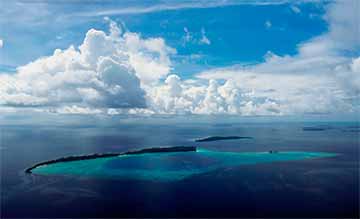Preparedness and prevention measures for keeping coronavirus out of the Solomon Islands.
The Prime Minister, Manasseh Sogavare, recently made a national address when he movingly highlighted the preparations and actions his government had taken in order to response the corona virus pandemic affecting much of the world but, thankfully, still kept out of the Solomon Islands.
The Prime Minister said the Solomon Islands government, as early as January this year, had established a high level, multi-sector Corona Virus Oversight Committee, chaired by the Secretary to Cabinet to assess and to coordinate a response to the Corona Virus threat to the country.
The oversight committee had produced a draft multi-sectoral Corona Virus Preparedness and Response Plan which was still being refined.
Once finalised, the Prime Minister said the plan would guide the work of all government sectors, and partners including the private sector, churches, civil society, and communities.
Prime Minister Sogavare said, during his national addrees, the government was then about to implement 21 measures, additionally to the ones earlier put in place, to protect the Solomon Islands from the coronvirus threat.
One of the 21 measures I thought especially important in view of the draw-back of several international air carrier services to the Solomon Islands, including Virgin Australia and Air Niugini, and reduced services proposed by the national carrier, Solomon Airlines, was the intention to establishing the capability locally to test for coronavirus at the National Referral Hospital (NRH) using the existing dengue labororatory.
The Prime Minister said the most recent tests for coronvirus, which were all returned negative, were tested in Melbourne.
In concluding his national broadcast, Mr Sogavare thanked and commended all involved, especially “front line” officers, in keeping coronavirus out of the country so far.
I am assuming the reference to “front line” officers referred to the immigration and health officials monitoring passenger arrivals at arrival points in the country such as sea ports and airports.
Of necessity I am sure those officers are undertaking health checks on arrivals by using hand held thermal thermometers but are the thermometers really adequate and effective in detecting whether an arriving passenger has a temperature?
A thermometer, if calibrated and if used appropriately, can detect a fever. “Great. we are all happy about that,” said Isaac Bogoch, an infectious disease specialist at Toronto General Hospital. “But is it an effective method for screening people for covid-19 infection? The answer is no.”
The use of temperature screening in the response to the coronavirus outbreak has been spotty so far, with some countries going all-out and others steering clear.
China, for instance, has made extensive use of temperature screening setting up checkpoints not just at airports, but outside apartment buildings and even at stores.
India is testing all international arrivals at airports. South Korea, Russia and others are screening arrivals from certain places.
Other countries are reportedly not bothering. Even with an outbreak raging in Italy, German health officials have argued that airport temperature screenings are not effective. There are several reasons that temperature screening is not effective on its own.
To start, in crisis situations, people may use inappropriate instruments, or use the right instruments incorrectly, leading to inaccuracies.
As the Solomon Islands increasingly moves to promote its undoubted tourism potential and expects visitor numbers to increase over the next few years to help create jobs and boost the economy, I would advocate the government investing in the adoption of tech fever detection systems.
First fielded during the 2003 SARS epidemic, thermal fever screening systems use cameras that detect the infrared energy invisible to the human eye that people and objects emit. Software constructs a heat map of exposed skin. Some systems are claimed to be able to get an accurate reading of people on the move in crowds, while others require travelers to face the camera and stand still, allowing a clear view of the corners of the eyes by the nose, the spot on the face where skin temperature comes closest to that of the body’s core. Anyone flagged with an elevated skin temperature can be taken aside for further examination.
An analysis of the recent first 400 documented coronavirus cases found it took an average of five days after infection before patients began to show symptoms.
Most studies to-date have cast doubt on the effectiveness of the earlier generations of thermal fever detection devices used in the SARS outbreak, but FDA researchers wrote in a 2018 paper that there was increasing evidence that the newer infrared scanners could accurately estimate body temperature “if qualified systems are used and appropriate procedures are consistently applied.”
The equipment can have varying degrees of sensitivity and some models are on the market and priced at US$5,000 to US$10,000.
Naturally in present circumstances there is said to be a high demand for such screening equipment.
Yours sincerely
Frank Short


